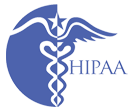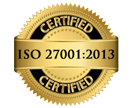Coding edits on CARDIOVASCULAR CODING
When an intravascular shunt procedure is performed as a part of another procedure at the same site requiring vascular revision, a service for a shunt procedure is not separately reported from CPT codes 36800-36861 (intravascular cannulization/shunt). By CPT Manual definition, this series of codes represents “separate procedures” (see separate procedure policy in Chapter I, Section J).
- An aneurysm repair may require direct repair with or without graft insertion, thromboendarterectomy and/or bypass. When a thromboendarterectomy is undertaken at the site of the aneurysm and it is necessary for an aneurysm repair or graft insertion, a separate service is not reported for the thromboendarterectomy. Additionally, if only a bypass is placed, which may require an endarterectomy to place the bypass graft, only the code describing the bypass can be reported. If both an aneurysm repair (e.g., after rupture) and a bypass are performed at separate non-contiguous sites, the aneurysm repair code and the bypass code should be reported with an anatomic modifier or modifier -59.
- If a thromboendarterectomy is medically necessary, due to vascular occlusion on a different vessel at the same session, the appropriate code may be reported, but should include an anatomic modifier or modifier -59, indicating that this represents non-contiguous vessels. At a given site, only one type of bypass (venous, non-venous) code can be reported. If different vessels are bypassed by different methodology, separate codes may be reported. If the same vessel has multiple obstructions and requires different types of bypass in different areas, separate codes may be reported; however, it will be necessary to indicate that multiple procedures were performed by using an anatomic modifier or modifier -59.
- When an open vascular procedure (e.g., thromboendarterectomy) is performed, the closure and repair are included in the description of the vascular procedure. Accordingly, the CPT codes 35201-35286 (repair of blood vessel) are not to be reported in addition to the primary vascular procedure.
- When an unsuccessful percutaneous vascular procedure is followed by an open procedure at the same session/same physician (e.g., percutaneous transluminal angioplasty, thrombectomy, embolectomy, etc. followed by a similar open procedure such as thromboendarterectomy), only the service for the successful procedure, which is usually the more extensive, open procedure is reported (see sequential procedure policy, Chapter I, Section M). In the case, where a percutaneous procedure is performed at the site of one lesion, and an open procedure is performed at a separate lesion, the services for the percutaneous procedure should be reported with modifier -59 only if the lesions are in distinct anatomical vessels.
- The HCPCS/CPT codes 36000, 36406, 36410, etc. represent very common procedures performed to gain venous access for phlebotomy, prophylactic intravenous access, infusion therapy, chemotherapy, hydration, transfusion, drug administration, etc. When intravenous access is routinely obtained in the course of performing other medical/diagnostic/surgical procedures, or is necessary to accomplish the procedure (e.g., infusion therapy, chemotherapy), it is inappropriate to bill separately for the venous access services. The work of gaining routine vascular access is integral to and therefore included in the work value of the procedure. HCPCS/CPT codes G0345, G0346 (90760-90761 in 2006) should not be reported for infusions to maintain patency of a vascular access site.
- When a (non-coronary) percutaneous intravascular interventional procedure is performed at the same session/site as diagnostic angiography (arteriogram/venogram), only one selective catheter placement code for the involved site should be reported. If the angiogram and the percutaneous intravascular interventional procedure are not performed in immediate sequence and the catheters are left in place during the interim, a second selective catheter placement or access code should not be reported. Additionally, dye injections to position the catheter should not be reported as a second angiography procedure.
- Diagnostic angiograms performed on the same date of service as a percutaneous intravascular interventional procedure should be reported with modifier -59. If a diagnostic angiogram (fluoroscopic or computed tomographic) was performed prior to the date of the percutaneous intravascular interventional procedure, a second diagnostic angiogram cannot be reported on the date of the percutaneous intravascular interventional procedure unless it is medically reasonable and necessary to repeat the study to further define the anatomy and pathology. Report the repeat angiogram with modifier -59. If it is medically reasonable and necessary to repeat only a portion of the diagnostic angiogram, append modifier -52 to the angiogram CPT code. If the prior diagnostic angiogram (fluoroscopic or computed tomographic) was complete, the provider should not report a second angiogram for the dye injections necessary to perform the percutaneous intravascular interventional procedure.
- When existing vascular access lines or selectively placed catheters are used to procure arterial or venous samples, billing for the sample collection separately is inappropriate.
- Peripheral vascular bypass CPT codes describe bypass procedures using venous grafts (CPT codes 35501-35587) and using other types of bypass procedures (arterial reconstruction, composite). Because, at a given site of obstruction, only one type of bypass is performed, these groups of codes are mutually exclusive. When different sites are treated with different bypass procedures in the same operative session, the different bypass procedures may be separately reported, using an anatomic modifier or modifier -59.
- Vascular obstruction may be caused by thrombosis, embolism and/or atherosclerosis as well as other conditions. Treatment may, therefore, include thrombectomy, embolectomy and/or endarterectomy; these procedures may be performed alone or in combination. CPT codes are available describing the separate services (CPT codes 34001 – 34203) and describing these services with thromboendarterectomy (CPT codes 35301 – 35381). Only the more comprehensive code describing the services performed for a given site can be reported; therefore, for a given site, a code from both of the above groups cannot be reported together. Additionally, in accordance with the sequential procedure policy, if a balloon thrombectomy fails, and requires a performance of an open thromboendarterectomy, only the more comprehensive service that was performed (generally the open procedure) is reported.
- When percutaneous angioplasty of a vascular lesion is followed at the same session by a percutaneous or open atherectomy, generally due to insufficient improvement in vascular flow with angioplasty alone, only the column one atherectomy procedure that was performed (generally the open procedure) is reported (see sequential procedure policy, Chapter I, Section M).
- CPT codes 35800-35860 are to be used when a return to the operating room is necessary for exploration for postoperative hemorrhage; accordingly, these codes are not to be coded for bleeding that occurs during the initial operative session. Generally, when these codes are used, they are to be reported with modifier -78 indicating that the service represents a return to the operating room for a related procedure during the postoperative period.



